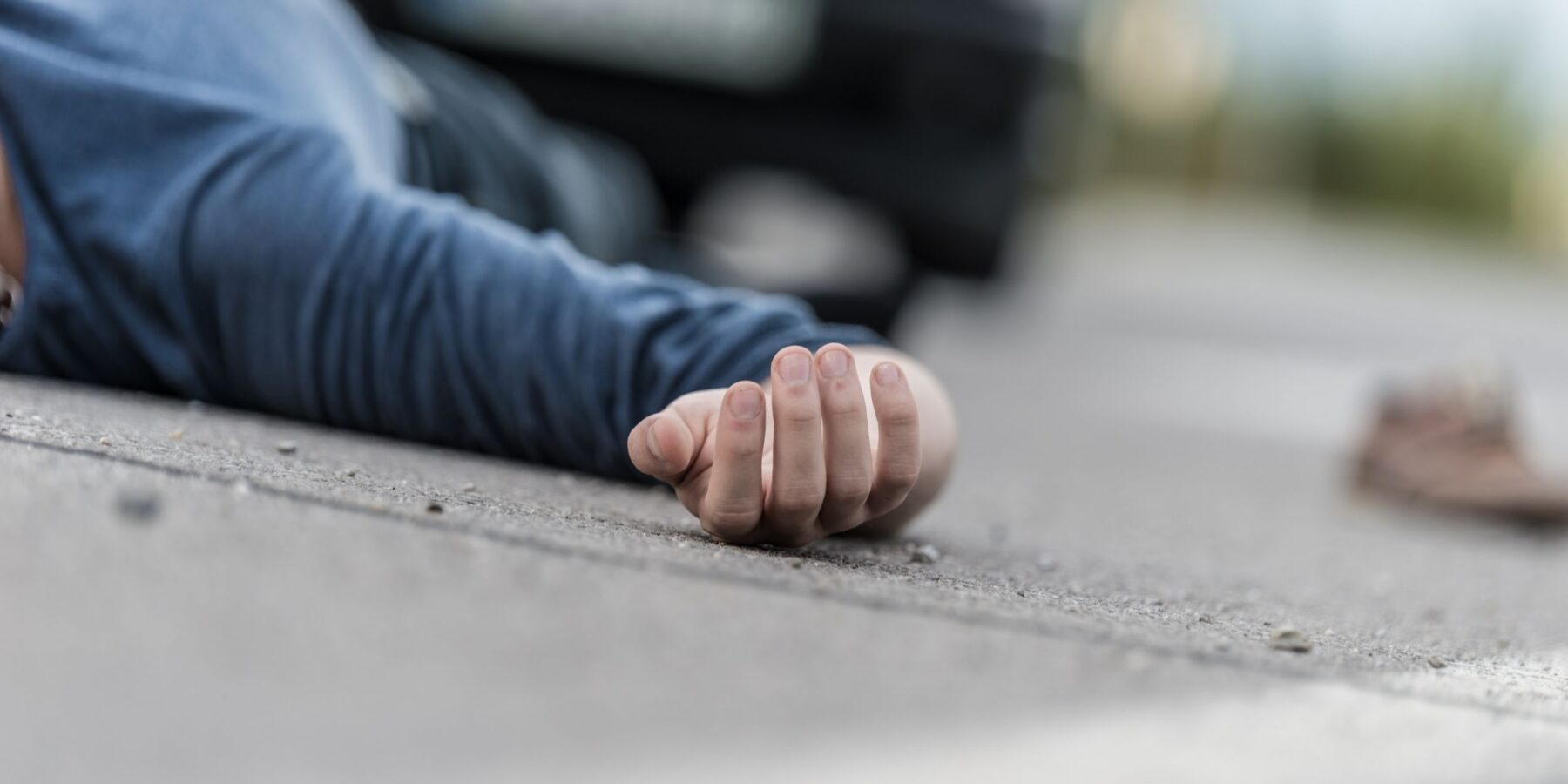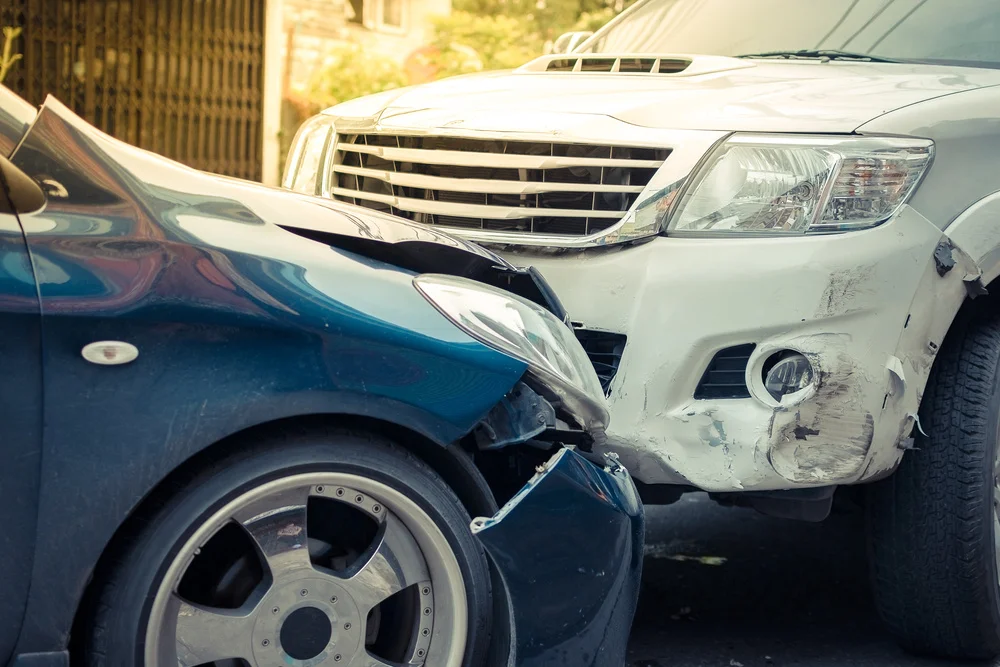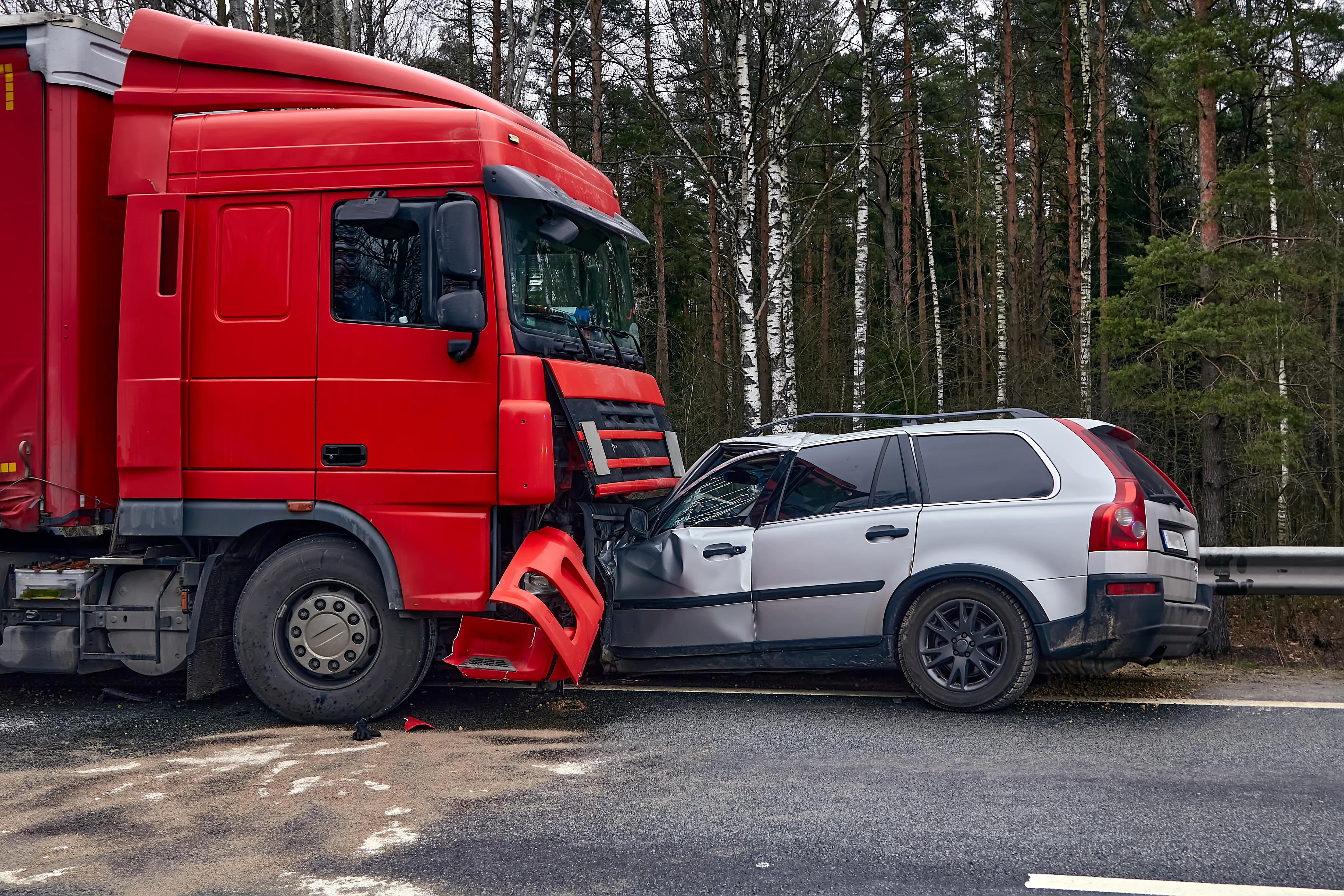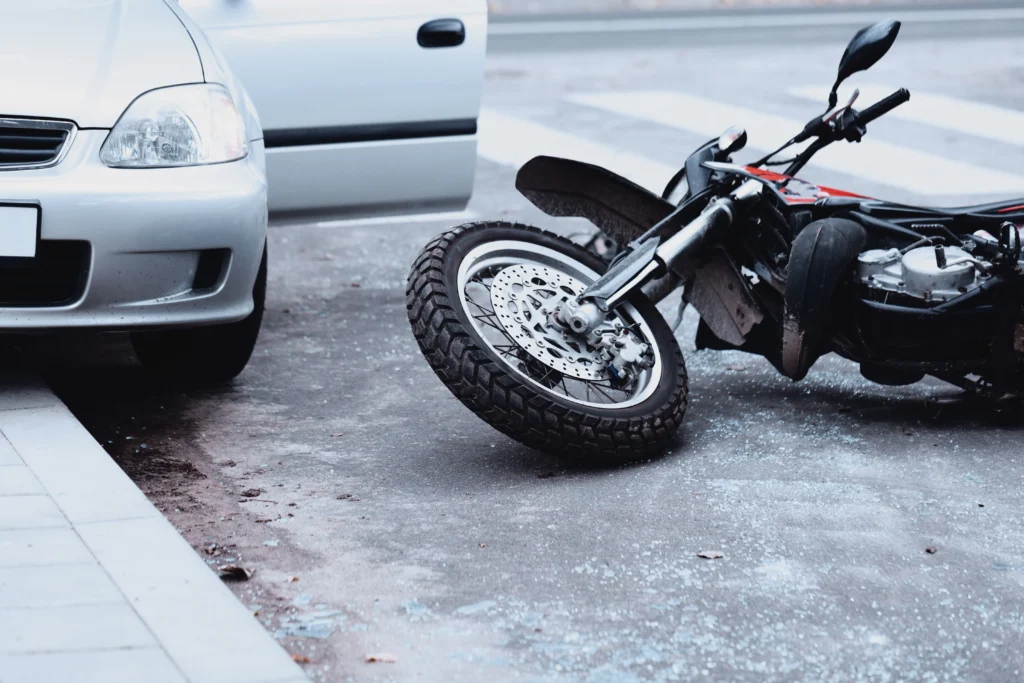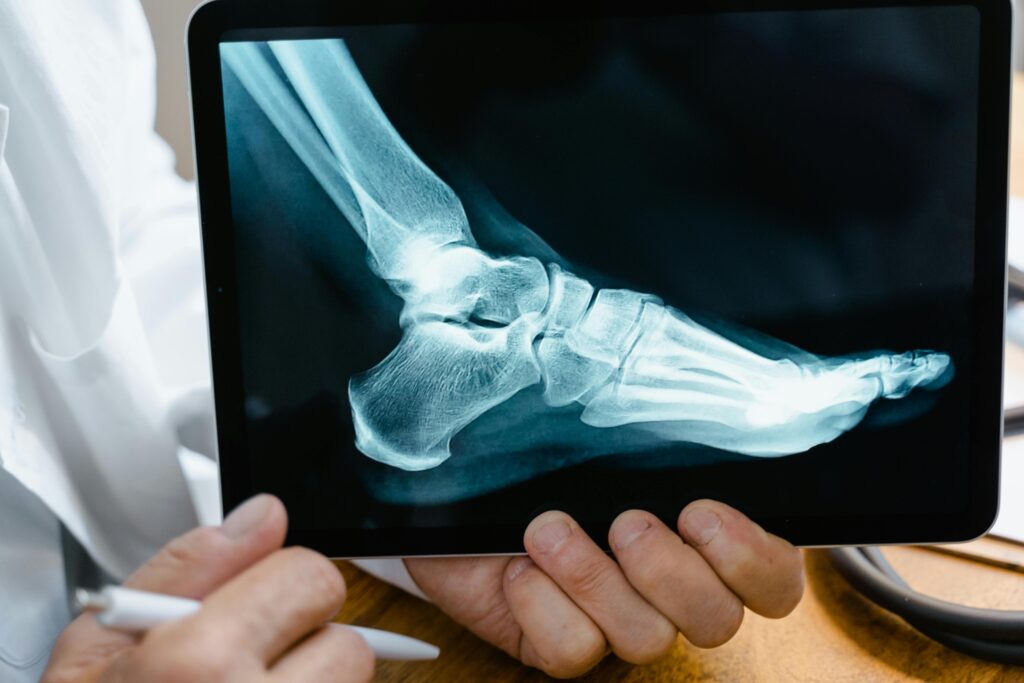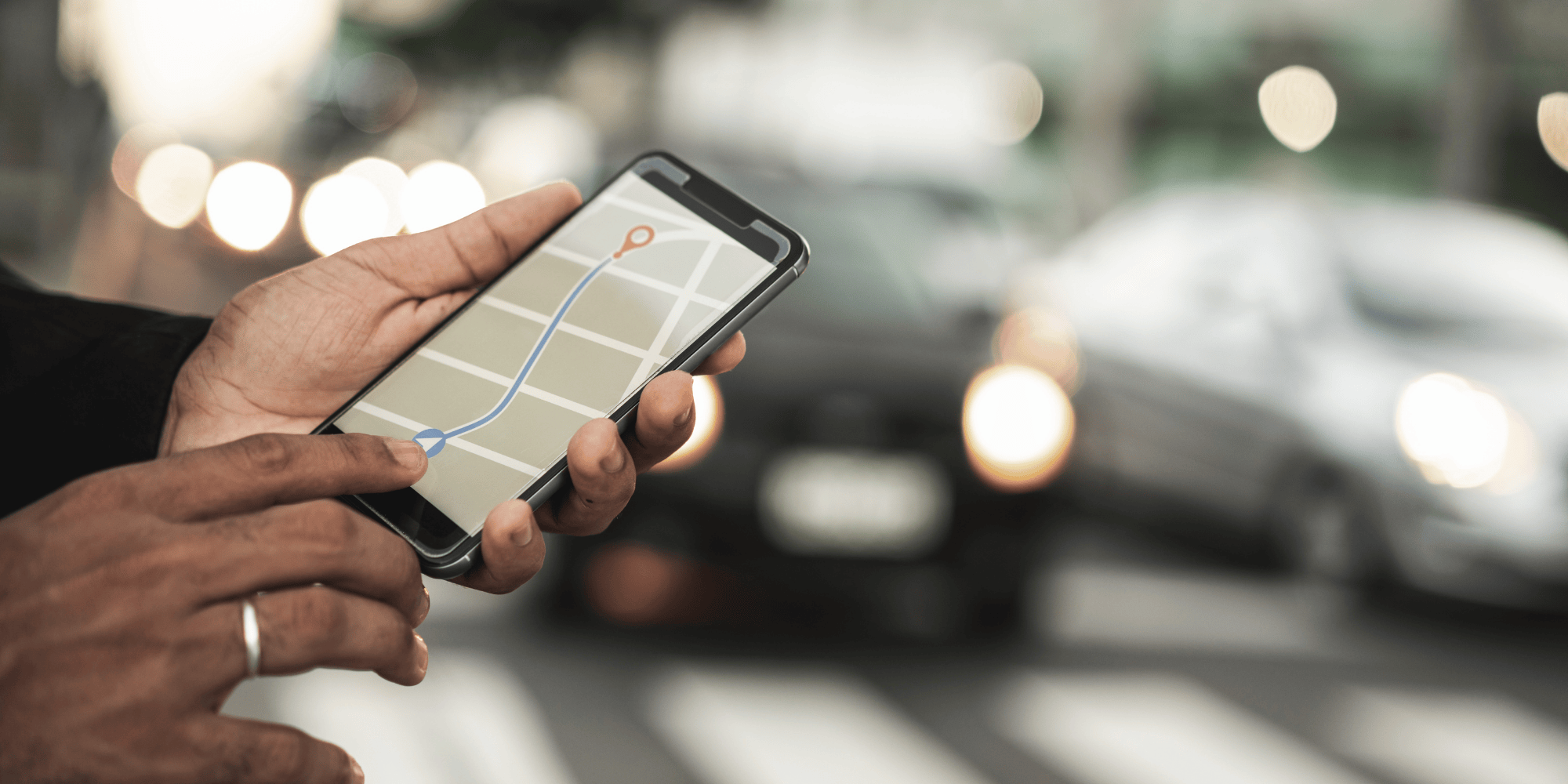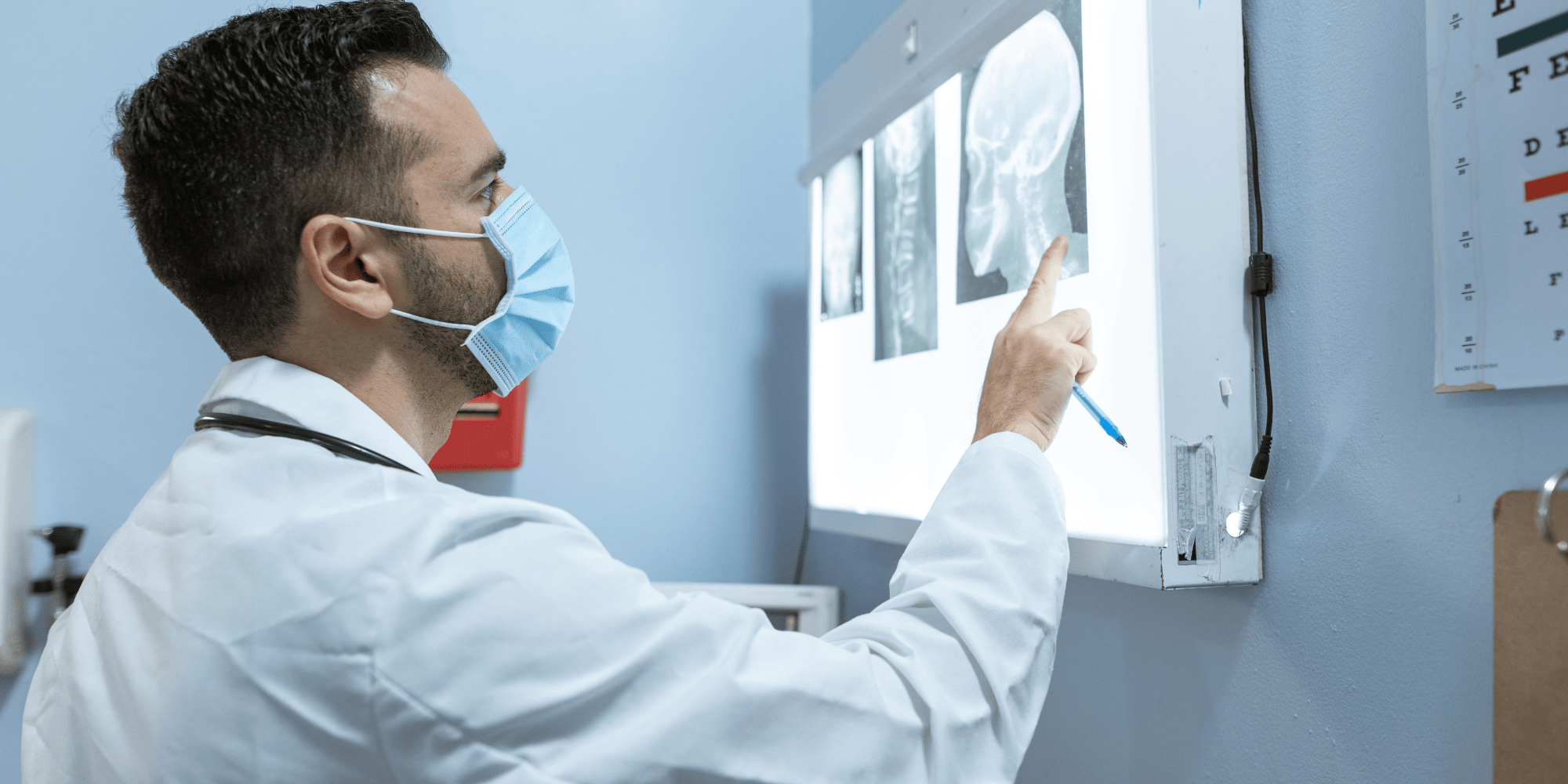What to Know About Pedestrian Accidents in Colorado Springs
Pedestrian accidents in Colorado Springs are becoming increasingly common, and the consequences are often devastating. With rapid development across the city and expanding traffic corridors like Academy Boulevard, Powers Boulevard, and Constitution Avenue, pedestrians are constantly exposed to drivers who are distracted, speeding, or simply unaware of their surroundings. A single moment of negligence can result in catastrophic injuries or even death.
Unlike occupants of motor vehicles, pedestrians have no protection from impact. When a vehicle strikes a person walking across the street, the human body absorbs the full force of the collision. Even low-speed crashes can cause traumatic brain injuries, spinal cord damage, or fatal internal trauma. In many cases, victims face months of rehabilitation, lost wages, permanent disability, and emotional trauma that affects their entire family.
At the Law Office of Jordan S. Levine, we understand the immense challenges pedestrian accident victims face. We’ve helped injured clients and grieving families across Colorado Springs recover the compensation they need to rebuild their lives after a serious collision. From identifying who is at fault to fighting back against the insurance companies, our team is ready to stand by your side and pursue justice every step of the way.
If you or a loved one has been hurt in a pedestrian accident, don’t wait. Call us today at (303) 835-4910 or reach out through our secure contact form for a free consultation. You pay nothing unless we win your case.
Common Causes of Pedestrian Accidents in Colorado Springs
Every year, hundreds of pedestrians are injured or killed in preventable crashes across Colorado Springs. From the foothills of Cheyenne Mountain to the gridlocked streets of downtown, residents walk for recreation, work, or necessity, and too often, they are met with negligence. Whether it’s a distracted driver rolling through a crosswalk or a speeding car barreling through a school zone, these collisions share one common factor: they could have been avoided.
At the Law Office of Jordan S. Levine, we’ve seen firsthand how these accidents devastate lives. Pedestrian injuries often result in extended hospitalization, permanent disability, and lasting emotional trauma. Many victims are children, seniors, or working adults who were simply trying to get from one place to another when a careless driver changed their lives in an instant. Understanding the most common causes of pedestrian accidents is the first step in holding the right people accountable and securing the compensation victims deserve.
Failure to Yield at Crosswalks
Drivers failing to yield the right of way to pedestrians is one of the leading causes of serious collisions in Colorado Springs. Crosswalks exist to protect people, whether marked with white lines at an intersection or implied by law at every four-way stop. Unfortunately, many motorists view these spaces as optional or secondary to their right to travel.
High-Risk Crosswalk Locations
Certain intersections in Colorado Springs are especially notorious for failure-to-yield crashes. Constitution Avenue at Powers Boulevard, or Chelton Road at Fountain Boulevard, are known danger zones where vehicles routinely ignore crosswalks. These areas often have heavy foot traffic due to nearby schools, bus stops, or shopping centers. Drivers approaching these intersections may be distracted or impatient and fail to stop, even when pedestrians have the right of way.
Colorado’s Crosswalk Law
Colorado law requires vehicles to stop for pedestrians in any crosswalk, and failure to do so can establish clear negligence in a legal claim. The Colorado Department of Transportation (CDOT) outlines the responsibilities drivers have to protect pedestrians, including slowing down and yielding at every intersection where people may be present. When a driver ignores these rules, they are liable for the harm that follows.
Distracted Driving Near Intersections and Bus Stops
In our smartphone-driven society, distracted driving is more common than ever, and its consequences are deadly. Drivers in Colorado Springs often use their phones to check directions, text friends, scroll social media, or even watch videos while navigating busy streets. When this happens near intersections, school zones, or transit stops, pedestrians often pay the price.
Visual, Manual, and Cognitive Distractions
Distractions fall into three categories: visual (eyes off the road), manual (hands off the wheel), and cognitive (mind off driving). Any one of these is enough to cause a crash, and many drivers engage in all three at once. The National Highway Traffic Safety Administration (NHTSA) warns that texting while driving increases crash risk as much as driving drunk. In pedestrian zones, this behavior is especially dangerous.
Impact Zones Around Transit Corridors
Intersections near public transportation routes are frequent sites of pedestrian injury. Along South Academy Boulevard, North Nevada Avenue, and Tejon Street, pedestrians often cross near transit shelters or stoplights. When a distracted driver misses a pedestrian stepping into the road, even for a split second, the consequences are life-altering.
Speeding in Residential and School Zones
Speeding drivers pose a serious threat to pedestrians, especially in areas where children walk to school or families cross residential streets. Colorado Springs neighborhoods are filled with speed limits set at 25 mph, yet it’s common to see cars traveling 10 to 20 mph above those limits. That difference in speed often determines whether a victim survives the impact or suffers fatal injuries.
Speed Kills at Any Impact Level
According to the AAA Foundation for Traffic Safety, a pedestrian struck at 20 mph has an 80% chance of survival, but at 40 mph, that chance drops to just 10%. Speed not only increases the severity of injury but also reduces the time a driver has to react. Pedestrians stepping into the street have virtually no chance if a speeding vehicle cannot stop in time.
Problem Areas in Colorado Springs
Neighborhoods near Dublin Boulevard, Constitution Avenue, and North Carefree Circle are particularly susceptible to speed-related pedestrian crashes. School zones near Doherty High School, Jenkins Middle School, and Centennial Elementary see frequent violations despite flashing lights and signage. These are community spaces, not highways, and speeding through them puts lives at risk.
Left-Turn and Right-Turn Collisions
Even when pedestrians cross legally at intersections, they are at high risk of being struck by turning vehicles. Drivers making left or right turns often focus only on oncoming traffic and fail to check the crosswalks beside or in front of them. This behavior leads to some of the most common and preventable pedestrian injuries in the city.
Drivers Only Looking for Cars
At four-way intersections, drivers are often so focused on vehicle traffic that they overlook pedestrians entirely. They “creep” into the intersection, glance for a gap, and accelerate through the turn, not realizing someone is walking across with the signal. These split-second decisions are deadly, especially for pedestrians crossing at a normal pace with children, strollers, or pets.
Crash Clusters at Complex Intersections
Left-turn crashes are especially common at multi-lane intersections like Garden of the Gods Road at Centennial Boulevard or Academy Boulevard at Palmer Park. These areas feature multiple traffic signals, turning lanes, and crosswalks, making it harder for drivers to track all movement. The Insurance Institute for Highway Safety (IIHS) identifies turning crashes as a key contributor to urban pedestrian deaths nationwide.
Driving Under the Influence of Alcohol or Drugs
Driving while impaired is not just reckless, it’s criminal. Alcohol, marijuana, and certain medications dramatically reduce a driver’s ability to respond to road conditions, notice pedestrians, or stop in time to avoid a crash. Impaired driving is a persistent threat in Colorado Springs, especially after dark.
Impaired Judgment and Reaction Time
Even small amounts of alcohol or THC can impair a driver’s reaction time and decision-making abilities. According to the Centers for Disease Control and Prevention (CDC), nearly 50% of fatal pedestrian crashes nationwide involve alcohol. Impaired drivers are more likely to drift across lanes, miss red lights, or make dangerous turns, behaviors that endanger pedestrians at every corner.
Colorado Springs Nightlife Zones at Risk
Fatal DUI crashes are disproportionately common near nightlife areas in downtown Colorado Springs and along the South Nevada Avenue corridor. These areas attract large crowds and heavy foot traffic, and when drivers leave bars or events impaired, the streets become deadly. Local law enforcement has cracked down on DUI enforcement, but the risk remains for pedestrians walking home or crossing near entertainment venues.
Poor Visibility and Inadequate Street Lighting
Lighting plays a critical role in pedestrian safety. When streets are poorly lit, drivers are far less likely to see someone crossing until it’s too late. Many high-speed corridors and neighborhood streets in Colorado Springs suffer from insufficient lighting, especially at mid-block crossings or intersections near parks and commercial lots.
Areas Lacking Illumination
Stretches of Fountain Boulevard, Airport Road, and the eastern edge of Powers Boulevard are known for inconsistent or missing streetlights. These gaps make it difficult for even cautious drivers to see pedestrians until they’re dangerously close. Poor lighting also affects a driver’s depth perception, especially in areas where crosswalk paint is faded or signage is missing.
Municipality Liability in Lighting Cases
When a city or county fails to maintain adequate lighting in pedestrian zones, it may share legal responsibility for the crash. The Federal Highway Administration (FHWA) recommends pedestrian-scale lighting and signal improvements to reduce nighttime fatalities. A civil lawsuit may uncover lighting maintenance failures, ignored safety recommendations, or outdated infrastructure that contributed to the accident.
Aggressive or Impatient Driving in High-Traffic Areas
In high-congestion zones, aggressive driving puts everyone at risk, but pedestrians suffer the most. Frustrated drivers often engage in reckless behaviors like tailgating, weaving, running red lights, or rolling through stop signs. These patterns are common in Colorado Springs corridors where traffic backs up during rush hour or after major events.
Sudden Turns, Lane Swerves, and Tailgating
Impatient drivers make sudden turns or erratic lane changes that can strike pedestrians even when they are not in the roadway. Drivers who tailgate or swerve around traffic may not see a pedestrian in the crosswalk until they’re already too close to stop. These reckless maneuvers often result in devastating side-impact or rear-end crashes involving people walking near medians or corners.
Congested Corridors and Driver Frustration
Fillmore Street, Union Boulevard, Powers Boulevard, and Austin Bluffs Parkway are some of the most congested arteries in Colorado Springs. During peak travel hours, drivers grow aggressive, ignoring pedestrians in favor of beating a traffic light or merging ahead of another vehicle. The National Safety Council (NSC) has warned that aggressive driving is among the top causes of serious urban crashes, especially when pedestrians are involved.
Injuries Commonly Sustained in Colorado Springs Pedestrian Accidents
Pedestrian accidents in Colorado Springs often result in catastrophic injuries. Unlike drivers and passengers in vehicles, pedestrians have no structural protection during a collision. When a two-ton vehicle strikes a person on foot, the force of impact transfers directly to the victim’s body. Even at speeds as low as 10 to 15 mph, the injuries can be severe, and at higher speeds, they are often life-threatening or fatal.
At the Law Office of Jordan S. Levine, we help victims of pedestrian collisions recover compensation for a wide range of physical and emotional injuries. We work closely with trauma specialists, orthopedic surgeons, neurologists, and mental health providers to fully document the impact of these crashes on our clients’ lives. Below are the most common injuries pedestrians suffer, many of which require hospitalization, long-term care, and permanent lifestyle adjustments.
Traumatic Brain Injuries and Head Trauma
Head injuries are among the most devastating outcomes of a pedestrian accident. Even if the victim’s head does not strike the vehicle directly, the fall to the pavement or curb can result in a traumatic brain injury (TBI).
Concussions and Mild TBIs
Concussions are the most common form of TBI and often occur when the brain is jolted inside the skull during impact. Victims may experience confusion, blurred vision, memory loss, and difficulty concentrating. Symptoms can appear immediately or emerge days after the crash. According to the Centers for Disease Control and Prevention (CDC), even “mild” brain injuries can cause significant disruption to daily life and should be taken seriously.
Skull Fractures and Brain Bleeds
More severe head trauma can lead to skull fractures, brain hemorrhaging, or swelling. These injuries often require emergency surgery and may result in long-term disability or cognitive impairment. Victims may need inpatient rehabilitation and may struggle with speech, motor control, or emotional regulation for years. The Mayo Clinic notes that early intervention is critical to improving outcomes in moderate to severe TBIs.
Spinal Cord Injuries and Back Trauma
The violent nature of a pedestrian crash often leads to spinal trauma, which can permanently alter a person’s mobility, sensation, and independence.
Herniated Discs and Spinal Compression
Many victims suffer from herniated or bulging discs after being struck and thrown to the ground. These injuries occur when the soft tissue between the vertebrae is pushed out of alignment, pressing on nearby nerves. This can result in chronic pain, numbness, tingling, and weakness in the limbs. The Cleveland Clinic explains that treatment may include physical therapy, steroid injections, or in some cases, spinal surgery.
Paralysis and Permanent Nerve Damage
In high-speed or high-impact pedestrian crashes, the spinal cord itself may be damaged. This can lead to partial or complete paralysis below the point of injury. Victims may lose function in their legs (paraplegia) or all four limbs (quadriplegia). These injuries are permanent and life-changing, often requiring the use of wheelchairs, home modifications, and 24-hour care.
Bone Fractures and Orthopedic Injuries
Broken bones are one of the most common outcomes of pedestrian accidents. The force of a vehicle impact or the resulting fall can easily fracture bones throughout the body.
Pelvic, Hip, and Leg Fractures
Pedestrians are often struck in the lower body first, leading to serious fractures of the pelvis, hips, or femurs. These injuries frequently require surgical fixation with metal plates, rods, or screws. Recovery can take months and may involve extended immobility, physical therapy, and long-term mobility issues.
Wrist, Arm, and Shoulder Fractures
Victims who attempt to brace themselves during a fall may suffer fractures in the upper extremities. Common injuries include broken wrists, dislocated shoulders, and radial fractures in the forearms. These injuries may seem less severe, but they can significantly affect the ability to work, drive, or perform daily tasks, especially if the dominant hand is involved.
Internal Injuries and Organ Damage
Some of the most dangerous injuries in pedestrian crashes are not immediately visible. Internal trauma can occur when a victim’s abdomen or chest is crushed during impact.
Blunt Force Abdominal Trauma
When a vehicle strikes the midsection of a pedestrian, the liver, spleen, or kidneys may be damaged. Victims may not notice symptoms right away, but internal bleeding can be life-threatening if not treated promptly. The National Library of Medicine stresses the importance of imaging tests and early intervention in cases of blunt abdominal trauma.
Rib Fractures and Lung Injuries
Chest trauma is another serious concern. Rib fractures can puncture the lungs, leading to a collapsed lung (pneumothorax), which can cause respiratory failure if untreated. These injuries often require hospitalization, oxygen therapy, or surgical chest tube placement to stabilize the patient.
Severe Soft Tissue Damage and Lacerations
In addition to broken bones and internal trauma, pedestrians frequently suffer severe lacerations, bruising, and muscle or ligament injuries during impact.
Torn Ligaments and Muscle Damage
Knee ligaments (ACL, MCL) and shoulder tendons are particularly vulnerable in sudden, twisting falls. These injuries may require reconstructive surgery and can lead to instability or chronic pain. Physical therapy is often needed for months to restore full function.
Road Rash and Deep Lacerations
Sliding along the pavement after impact can strip away skin layers, leading to “road rash.” In more serious cases, wounds expose muscle or bone, requiring skin grafts or reconstructive procedures. These injuries also carry a high risk of infection and permanent scarring.
Emotional and Psychological Trauma
Pedestrian crash victims often suffer profound emotional injuries that persist long after the physical wounds heal. These psychological effects can interfere with sleep, relationships, work, and daily life.
Post-Traumatic Stress Disorder (PTSD)
PTSD is common among victims of violent or sudden trauma. Pedestrians struck by vehicles may develop flashbacks, anxiety, nightmares, and a fear of walking near traffic. According to the American Psychological Association (APA), PTSD can severely impair quality of life and requires professional therapy, sometimes for years.
Depression, Anxiety, and Driving Phobias
Some victims struggle with depression caused by chronic pain, disfigurement, or the loss of mobility and independence. Others develop anxiety about crossing streets, walking alone, or even being near moving traffic. These conditions are legitimate injuries and should be included in a comprehensive claim for non-economic damages.
What to Do After a Pedestrian Accident in Colorado Springs
The moments after a pedestrian accident are often filled with confusion, fear, and pain. Whether you’re the injured person or a loved one assisting, the steps you take immediately after the crash can dramatically affect your medical recovery, financial security, and legal rights. In Colorado Springs, where pedestrian collisions frequently occur on busy streets and intersections, knowing what to do next is critical.
At the Law Office of Jordan S. Levine, we’ve helped countless victims take control of their situation, preserve vital evidence, and hold negligent drivers accountable. Below are the essential steps every pedestrian accident victim should follow, starting at the scene of the crash and continuing through the days and weeks that follow.
Call 911 and Request Emergency Services
Immediately after a pedestrian accident, the priority is health and safety. If you’re able, call 911 and report the collision. Request emergency medical personnel and law enforcement.
Why Emergency Response Is Critical
Even if you think your injuries are “minor,” you could be suffering from internal bleeding, a concussion, or spinal trauma. The Colorado Department of Public Health & Environment stresses that early medical intervention saves lives and helps prevent long-term complications. Allow paramedics to evaluate you and take you to a hospital if needed.
File a Police Report with Responding Officers
Once law enforcement arrives, make sure a detailed police report is created. In Colorado Springs, the responding agency will typically be the Colorado Springs Police Department or, in unincorporated areas, the El Paso County Sheriff’s Office.
Documenting the Incident for Your Legal Case
The police report will serve as a key piece of evidence in your personal injury claim. It typically includes driver statements, witness contact information, road and weather conditions, citations issued, and preliminary fault findings. You can request a copy of the report through the Colorado Springs Police Records Portal.
Seek Immediate Medical Treatment and Follow Up
Even if you decline an ambulance ride, it’s essential to see a doctor the same day, ideally within a few hours of the crash.
Get Documented, Consistent Care
Insurance companies often use gaps in treatment as an excuse to deny or reduce claims. Be sure to visit a hospital, urgent care clinic, or your primary care physician as soon as possible. Major trauma centers in Colorado Springs include UCHealth Memorial Hospital Central and Penrose Hospital.
Continue all recommended treatment plans, attend follow-up appointments, and document any new symptoms or setbacks.
Collect Evidence at the Scene (If You’re Able)
If your injuries allow or if someone with you can assist, begin gathering evidence while you’re still at the scene of the crash.
Photographs and Videos Matter
Take pictures of your injuries, the vehicle involved, skid marks, damaged property (shoes, phone, bags), street signs, crosswalks, and traffic lights. Capture wide-angle views and close-ups. Photograph the driver’s license plate and any signage or hazards nearby. These images are critical for reconstructing how the accident occurred.
Get Witness Contact Information
Ask for the names and phone numbers of anyone who saw the crash. Eyewitness accounts can help clarify the sequence of events and support your version of what happened, especially if the driver denies fault.
Do Not Speak with the Driver’s Insurance Company
Soon after the crash, the driver’s insurance adjuster may call you. They may seem polite or express sympathy, but their job is to minimize the company’s financial exposure, not help you recover.
Refer All Insurance Communications to Your Attorney
You are not required to give a recorded statement or accept a settlement offer without legal representation. Doing so may harm your case. The Colorado Division of Insurance advises accident victims to consult a lawyer before signing anything. Let your attorney handle all communications, negotiations, and paperwork with the insurer.
Track Your Medical Expenses and Out-of-Pocket Costs
Start a folder to keep track of every medical bill, prescription, co-pay, and expense related to the accident. This includes rideshare costs to appointments, assistive devices, and home health care.
Keep Detailed Financial Records
Your personal injury claim must demonstrate your financial losses. Keep receipts, insurance statements, and mileage logs. These will be used to calculate your economic damages, along with your lost wages and estimated future treatment costs.
Start a Personal Injury Journal
Memory fades quickly after trauma. A written journal allows you to track your pain levels, physical limitations, emotional state, and impact on daily life.
Why a Daily Log Strengthens Your Case
By describing how the injuries affect your sleep, work, mobility, and relationships, you create powerful evidence of pain and suffering, a key component of non-economic damages. This journal can help support claims for PTSD, depression, or anxiety, which are often undercompensated without detailed personal documentation. The American Psychological Association (APA) recommends journaling as part of the emotional recovery process after traumatic events.
Contact a Colorado Springs Pedestrian Accident Attorney Immediately
Finally, speak with a qualified pedestrian accident attorney as soon as possible. The earlier you involve a lawyer, the more effectively they can preserve evidence, protect your rights, and build your claim.
Legal Deadlines Can Cut Off Your Right to Compensation
In Colorado, most pedestrian injury lawsuits must be filed within three years of the crash, but certain claims, such as those involving government entities (e.g., poor road design or lighting), may have deadlines as short as 180 days. Acting quickly ensures that crucial evidence like video footage, cell phone data, and skid marks can be preserved before they disappear. A dedicated attorney will guide you through every step and advocate aggressively for your recovery.
Get Legal Help After a Colorado Springs Pedestrian Accident
A pedestrian accident can change your life in an instant. One moment you’re walking to school, work, or the grocery store, and the next, you’re facing months of medical treatment, rising bills, missed paychecks, and long-term pain. You didn’t cause this crash, and you shouldn’t have to bear the consequences alone.
At the Law Office of Jordan S. Levine, we fight for injured pedestrians across Colorado Springs. Whether you were hit in a crosswalk on Academy Boulevard, injured near a bus stop on Powers, or struck while walking through your neighborhood, you have legal rights. Our team will handle the insurance companies, preserve crucial evidence, and demand the compensation you need to recover fully, physically, financially, and emotionally.
We work on a contingency fee basis, which means you pay nothing unless we win your case.
Don’t let a negligent driver or a reluctant insurance adjuster decide your future. Call us today at (303) 835-4910 or contact us online to schedule your free, no-obligation consultation. Let us help you take the first step toward justice and recovery.
Practice Areas
Trust Levine LawWith Your Personal Injury Claim
If you or a loved one have been injured, Levine Law will fight for you every step of the way. We will give our all to secure the compensation you rightfully deserve.
Contact usfor a free consultation.
Phone: (303) 951-4810
